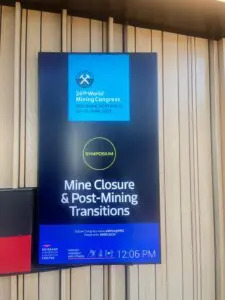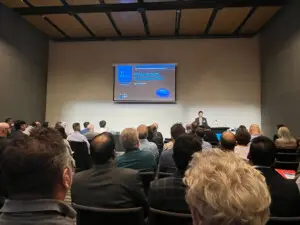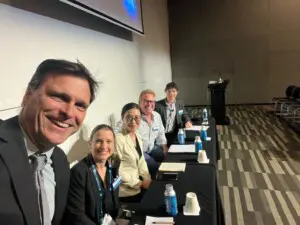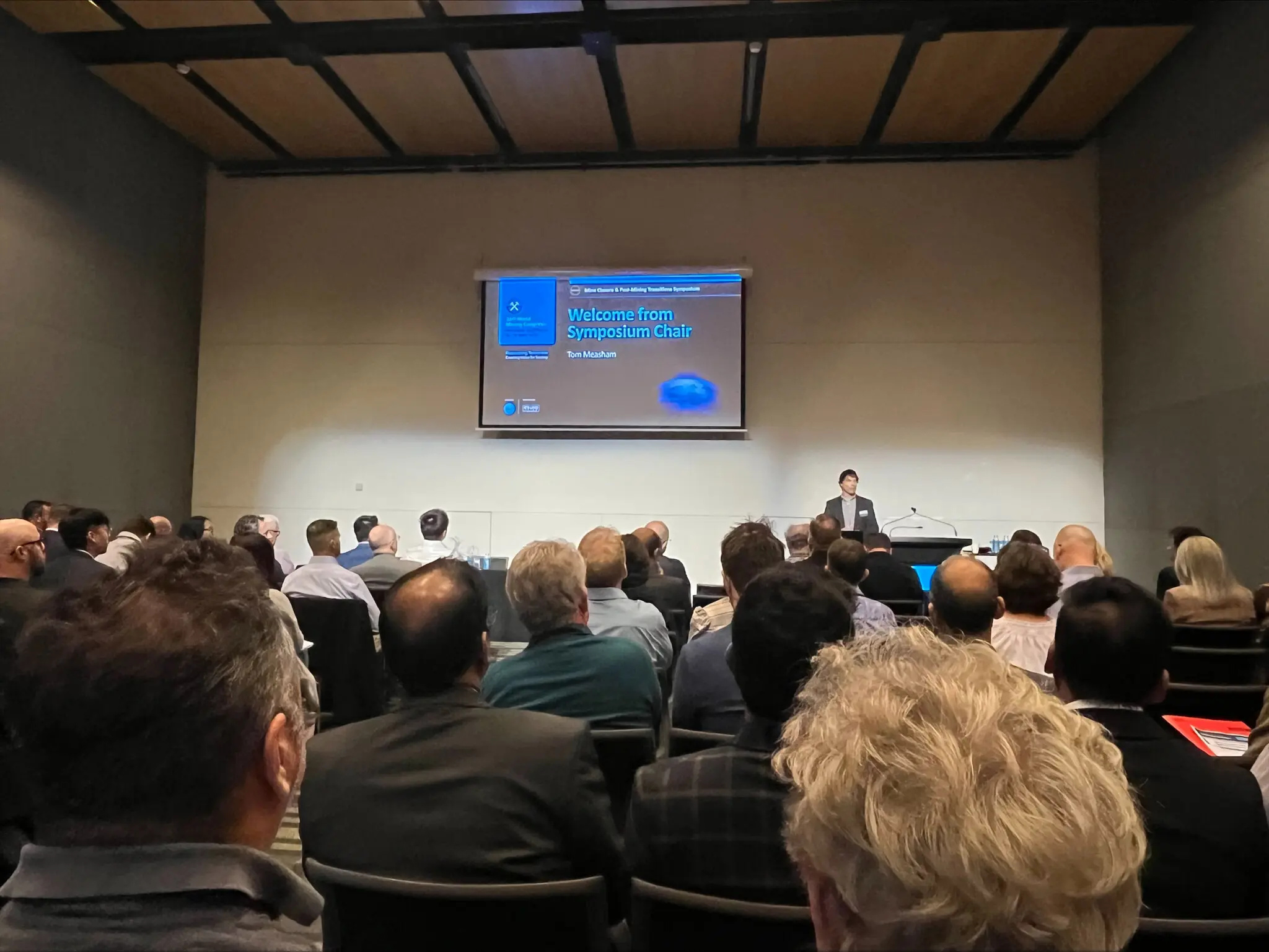This special symposium at the 2023 World Mining Congress in Brisbane was led by CRC TiME Research Director Professor Tom Measham and brought together delegates and speakers from Australia, Canada, Finland, Ghana, India, Mongolia, Poland, Slovakia, and USA. It featured panel discussions and presentations including case studies on different aspects of mine closure and transition to post-mining economies. Here’s a summary of the proceedings:
 A keynote by Emma Gagen from ICMM highlighted how important mine closure is and showing how far we have to go towards a track record of mines that are successfully closed and repurposed. A highlight of the symposium was the opening panel focused on First Nations Perspectives on sustainability and transitions in mining economies. Chaired by Jim Walker from CRC TiME, the panel included Nalaine Morin from Skeena Resources, Vanessa Elliot from CRC TiME and Jonathan McLeod from the Northern Land Council.
A keynote by Emma Gagen from ICMM highlighted how important mine closure is and showing how far we have to go towards a track record of mines that are successfully closed and repurposed. A highlight of the symposium was the opening panel focused on First Nations Perspectives on sustainability and transitions in mining economies. Chaired by Jim Walker from CRC TiME, the panel included Nalaine Morin from Skeena Resources, Vanessa Elliot from CRC TiME and Jonathan McLeod from the Northern Land Council.
It is impossible to do justice to the depth of the discussion in this summary, however an overarching theme was the significance of respecting timeframes. Rushing exploration, development and approvals and failing to adequately understand and consider First Nations concerns and aspirations has led to substantial harm. The risk of this re-occurring in the accelerated timelines to develop critical minerals is a major issue that seems to be substantially overlooked in the current environment.
Recognising the history of past trauma associated with mining, and how it can be re-surfaced through closure discussions, was another key message. First Nations peoples are not only stakeholders but also rights holders, as represented in the United Nations Declaration on the Rights of Indigenous Peoples. First Nations peoples may not necessarily be against mining, and insightful case studies of First Nations mining companies were discussed. Panellists considered differences in how diverse cultures think about mining and life-cycles. In a culture of 3000 generations, a mine lasting 1-2 generations is a relatively short timeframe.

Diverse speakers throughout the parallel sessions highlighted on one hand, the magnitude of closures around the world, and the other hand the intensity of individual closure case studies. Closure can be traumatic and transition isn’t necessarily positive. A powerful presentation by Jeffrey Jacquet from Ohio State University highlighted the social and economic impacts of abrupt closure on regional communities and the need for research to help communities to process change and to find space to grieve. Within this context, the roles of the visual arts and theatre are very powerful, showcasing a ‘powerplant funeral’ which helped affected communities deal with their trauma following coal mine closures.
The importance of policy reform was also highlighted by James Purtill (Queensland Mine Rehabilitation Commissioner) who discussed significant changes in the state of Queensland including the requirement for progressive rehabilitation towards a stable state capable of sustaining a post-mining land use.

The closing panel focused on the significance of good closure for the future of the sector, bringing together Symposium Chair Tom Measham from CRC TiME, Nadja Kunz from University of British Columbia, Anarmaa Sharkhuu from Mongolia Research and Development Center for Climate Change and Sustainable Development, Guy Boggs from CRC TiME and Mike O’Kane from Okane was an interactive discussion on a range of key topics including the challenges of water treatment, the importance of Healing Country, and how the land form of rehabilitated sites is often inconsistent with natural processes and cultural expectations.
The discussion also emphasised that importance of language, noting that some of the terms used in mining convey a negative language that can be culturally offensive. An example of this is ‘waste rock dump’ which may be disrespectful to those who hold the land as sacred.
Finally, the discussion considered the demand from the finance sector and institutional investors for greater transparency about the limitations of closure and the consequent potential for climate related risks due to inadequate closure planning and implementation.
Professor Tom Measham
Chair, Symposium on Mine Closure and Transitions
CRC TiME Research Director

